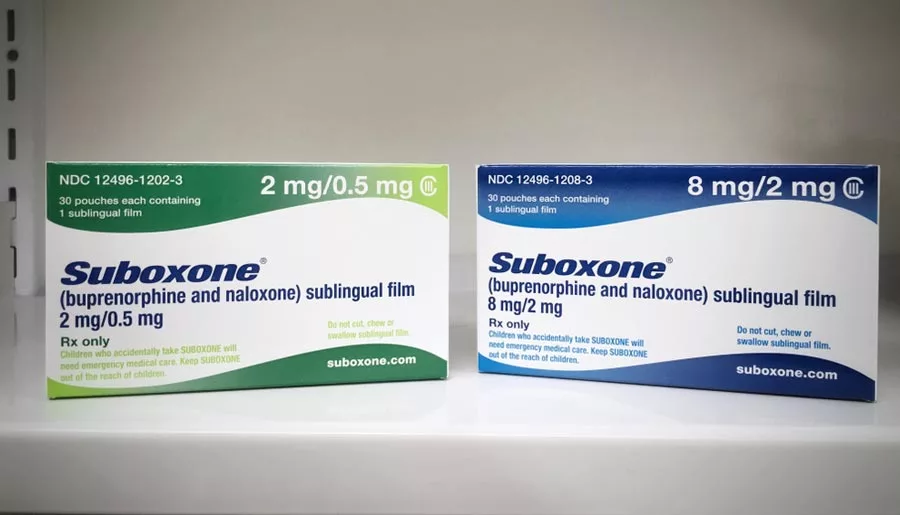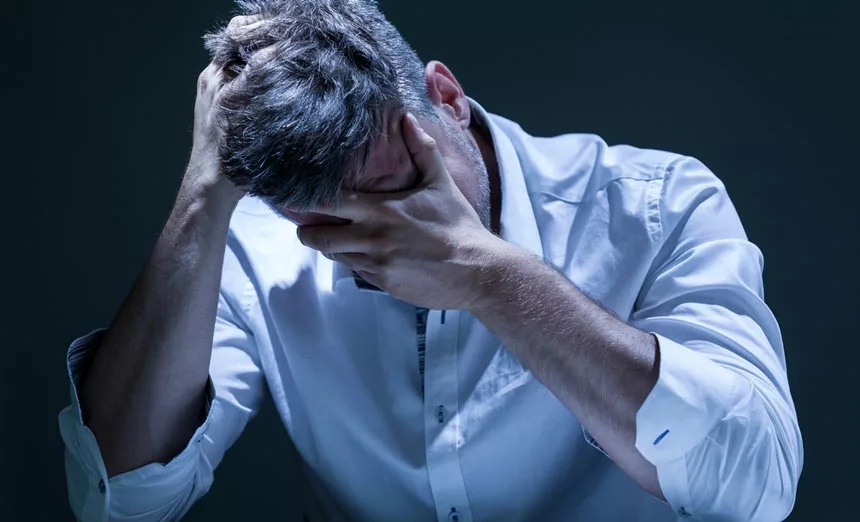A Closer Look at Suboxone as Opioid Dependence
Table of Contents
- A Closer Look at Suboxone as Opioid Dependence
- What is Suboxone?
- How Does Suboxone Work?
- The Spread of Opioid Addiction
- Recognizing the Signs of Suboxone Abuse and Addiction
- What are Common Suboxone Withdrawal Symptoms?
- Suboxone Addiction Treatment Options
- FAQs Beyond Is Suboxone Addictive?
- Find Treatment Programs to Get Off Suboxone Now!
As opioid abuse and addiction continues to spread throughout the country, new methods of treating this issue have become increasingly available. Prescription medications used to help manage withdrawal symptoms and cravings, in particular, have become more popular.
Suboxone is a medication that has become more commonly used to help those recovering from opioid addiction. Suboxone is not considered in the same way that other opioid drugs are, but still, the question remains: is Suboxone addictive?
This medication does not produce the same intense euphoria or “high” common with other opioids, meaning it does not have as high of a risk for abuse as other drugs do. However, it is important to remember that Suboxone is still an opioid, and it can still be misused.
Keep reading to learn about the potential for becoming addicted to Suboxone, and how to find effective forms of detox and treatment if you or a loved one want to stop all opioid use!
What is Suboxone?

Suboxone is a prescription medication made up of a combination of buprenorphine and naloxone. When taken as prescribed, Suboxone can help individuals struggling with opioid addiction manage their cravings and other forms of opiate withdrawal symptoms, and can be an effective tool for treating substance abuse.
However, if it is not taken as prescribed, or if it is taken without a legitimate prescription or needs for the medication, it can produce a number of negative side effects, including physical dependence, tolerance, and withdrawal symptoms.
How Does Suboxone Work?
Suboxone use has become increasingly popular as a treatment option for individuals struggling with opioid addiction. This is because of the medication’s main active ingredients: buprenorphine and naloxone. Different forms of the drug, such as Subutex, omit naloxone or are administered in different ways. Route of administration is a core difference between Sublocade vs Suboxone, for example.
Buprenorphine is an opioid partial agonist. Opioid agonists bind to the brain’s opioid receptors and produce a mild opioid effect. Naloxone is an opioid antagonist, meaning that it blocks the effects of opioids in the brain.
When taken as prescribed, the combination of these two drugs can be an effective way to manage opiate withdrawalsand cravings, while having a low to moderate risk of adverse side effects. With that being said, it is important to remember that it can be addictive in some cases.
It is important to speak with your doctor or healthcare provider before taking this medication, as well as to only take it as instructed if it is prescribed to you.
The Spread of Opioid Addiction
The opioid epidemic that is currently sweeping across the United States is a disturbing reality. This crisis has been fueled by the spread of opioid addiction, which has become a major public health concern across the nation
Opioids are a class of drugs that are derived from opium and include both prescription medications, such as oxycodone and hydrocodone, and illicit substances such as heroin and fentanyl. Not only are opioids highly addictive, but they can lead to various health consequences, including overdose and death.
There are several reasons why the opioid epidemic has spread to such a massive extent. For starters, the increased availability of opioids has made them more accessible to the general public, particularly in the case of prescription opioids which have become commonly used to train chronic and severe pain.
Unfortunately, many opioids are marketed as a safe and effective treatment for pain, even though their long-term use can lead to addiction and other health risks. Many people who take a prescription opioid find themselves forming a physical or psychological dependence on their medication.
There is also the fact that illicit drugs such as heroin and fentanyl have become more accessible, and are a major risk for drug abuse and addiction.
Finally, the stigma associated with opioid addiction has made it difficult for individuals to seek help. People who have an opioid use disorder may feel ashamed and embarrassed, and as a result, may be unwilling to seek treatment.
Recognizing the Signs of Suboxone Abuse and Addiction
Opioid addiction is characterized by a person’s inability to stop their substance misuse despite the negative consequences. Those who abuse the medication and suffer from Suboxone addiction may suffer from various physical, psychological, and social consequences.
It is important to be aware of the signs and symptoms of opioid addiction so that you can help someone who may be suffering from this condition, including yourself. Some of the most common signs and symptoms of an opioid use disorder include:
- Uncontrollable opioid cravings can lead to extreme behaviors and actions in order to acquire Suboxone or any other abused opioid.
- Seeing multiple doctors to get multiple prescriptions for Suboxone, a process which may be referred to as “doctor shopping.”
- Building a tolerance to suboxone, which is when you need more of the drug to get the same effect.
- Using the drug in ways that are not intended, such as attempting to inject Suboxone, or actually injecting Suboxone
- Starting to experience withdrawal symptoms when no longer using Suboxone, which can be moderate or severe in nature.
- Developing social problems, such as neglecting responsibilities for work and school, withdrawing from family and friends, and getting into legal trouble due to drug use.
- Experiencing mood changes, such as going from feeling euphoric when abusing Suboxone to feeling depressed or irritable when not using.
If you or someone you know is experiencing any of these signs of opioid addiction, it is important to seek help as soon as possible. Treatment for opioid addiction is available and can help you lead a healthier, drug-free life.
What are Common Suboxone Withdrawal Symptoms?

If someone has been misusing Suboxone, they may begin to experience both physical and psychological withdrawal symptoms when they stop using this medication. For those struggling with this particular substance use disorder, they may experience physical symptoms of withdrawal such as:
- Nausea
- Headaches
- Muscle aches
- Insomnia
- Fatigue
- Sweating
In addition to these side effects, psychological symptoms can include:
- Anxiety
- Depression
- Irritability
- Agitation
- Difficulty concentrating
- Drug cravings
Suboxone Addiction Treatment Options
Treating addiction can be a complicated process, especially when it comes to managing substance use disorders involving opioids. In many cases, the recovering individual will have an extensive treatment plan designed to address all of their needs.
Generally, this process will start with a detox program. In order to minimize the severity of Suboxone withdrawal symptoms, gradually tapering off of this medication is the safest option for treatment. This means that the dose of Suboxone should be slowly decreased over time, instead of abruptly stopping the medication.
This can help to suppress withdrawal symptoms, and even prevent them entirely. It is also important to receive medical supervision when discontinuing Suboxone. Seeking out a medically-supervised detox program will be a crucial part of the Suboxone treatment process.
The licensed medical professionals available through these programs can provide advice and support to help manage the withdrawal process. Your treatment provider may also prescribe medications, such as antidepressants or anti-anxiety medications, to help manage the psychological symptoms of withdrawal.
What Happens After Detox for Subs?

Once the detox process has been completed, most people will be encouraged to move on to further levels of care, such as inpatient and outpatient programs. Which of these treatment options will be best for the individual can vary based on the severity of their addiction, and whether they have any underlying medical or mental disorders.
Finally, it is important to seek out support during the withdrawal process. Support groups, such as Narcotics Anonymous and other secular alternative groups can provide a safe and supportive environment where people can share their experiences and receive support from others.
Additionally, according to the Substance Abuse and Mental Health Services Administration (SAMHSA), counseling can help to provide emotional support and healthy coping skills to manage cravings and other withdrawal symptoms.
Treating Suboxone addiction can be a challenging process, but with the right support and guidance, you can safely and successfully discontinue this medication. The Find Addiction Rehabs team can help you understand all of your treatment options, and get you started in a recovery program today.
FAQs Beyond Is Suboxone Addictive?
Is Suboxone Safe?
While taking Suboxone is generally considered a safe and effective treatment for opioid addiction, there is a concern that it may be addictive in some cases. In addition, deciding to misuse Suboxone can be dangerous when this medication is mixed with other substances, such as alcohol or sedatives.
Abusing Suboxone with other substances can increase the risk of fatal overdose and other serious health complications. While Suboxone features a ‘ceiling effect’ that limits how high it can get a regular user, new users and those using other substances face the risk of overdose. Suboxone overdose can be life-threatening and will require immediate medical attention in order to be properly addressed.
What Medications are Used to Treat Opioid Addiction?
There are a number of medications available to treat opioid addiction. Methadone is one of the oldest and most widely used medications to treat opioid addiction. It is a synthetic opioid agonist, which means it binds to the same brain receptors as heroin and other opioids, but without producing the same high.
Methadone helps reduce cravings and withdrawal symptoms, allowing patients to focus on recovery. Buprenorphine treatment is another common method of managing opioid abuse. Buprenorphine is also longer-acting than methadone, so recovering individuals may not need to take it as often.
Does Suboxone Block Partial Opioid Receptors?
Suboxone is made up of buprenorphine, an opioid, with an opioid antagonist, Naltrexone. Therefore it is known as a partial opioid agonist. It can also help block the effects of opioids. It is usually prescribed for people who have already stopped using opioids but are at risk for relapse. Naltrexone prevents opioids from attaching to the brain receptors, reducing cravings and preventing the high associated with opioid use.
These medications can be effective in treating opioid addiction, but they are not a cure. Those using medication-assisted treatment methods to manage their substance abuse should be monitored by a medical professional and combine medication with therapy, support groups, and lifestyle changes to achieve long-term recovery.
Find Treatment Programs to Get Off Suboxone Now!
If you or a loved one is abusing Suboxone or any other substance, the Find Addiction Rehabs team can get you the help you need. We can walk you through the treatment process and find a rehab facility capable of providing for all of your care needs nationwide.
Our hotline is available 24 hours a day, seven days a week to provide you with answers for all of your treatment questions and connect you with recovery tools and resources. Call now, and take the first step on your path to getting truly sober, today!
Nicole R. is an experienced and accomplished writer with special interests in the fields of Anthropology, English, and behavioral health, and has written countless articles for newspaper publications, institutional research journals, and Find Addiction Rehabs.
Her alma matter is Florida Atlantic University in Boca Raton. Nicole hopes to spread awareness of and combat the stigmatization surrounding addiction and substance abuse treatment through her writing and work in the field.


